The leopard, also known as the cheetah, is a mammal belonging to the Felidae family and Acinonyx genus. Leopards are of medium size, with slender bodies, and are renowned for their incredibly fast running speed, being the fastest land animal. They are primarily distributed in Africa, inhabiting grasslands and deserts.
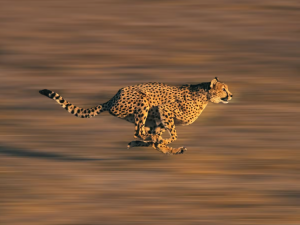
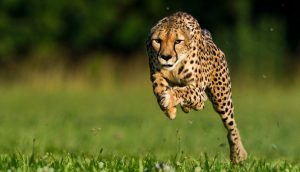
Characteristics of the leopard:
- Size: They typically measure 1.1 to 1.4 meters in length and weigh around 34 to 64 kilograms.
- Fur: Leopard fur ranges from light yellow to brown and is covered in distinctive black spots of various shapes across their bodies. Their fur is thin and long.
- Physique: Leopards have slender bodies, small heads, large eyes, short and wide ears, long and slender necks.
- Speed: Leopards are known for their unmatched speed among land animals, capable of reaching speeds of up to 112 km/h in short bursts, making them one of the most skilled predators in the animal kingdom.
- Diet: Leopards are carnivores and primarily hunt during the day, targeting small animals such as antelope, camels, goats, sheep, antelope, rabbits, and relatively small mammals.


In particular, leopards have the ability to regulate their body temperature by cooling through breathing, allowing them to run farther and for longer periods than other animal species.
Where do leopards live? Leopards mainly inhabit Africa, especially in the southern and southeastern regions, including Botswana, Namibia, Zimbabwe, Mozambique, Zambia, Tanzania, Kenya, Uganda, and Somalia. Leopards also once lived in Western Asia such as Iran, but have since disappeared from this region.
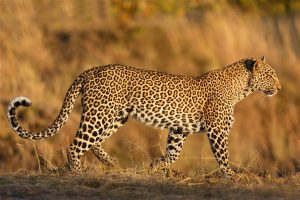
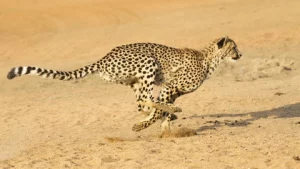
Leopards can live in various habitats, from open grasslands to plains and tropical rainforests. However, they adapt best to grassy areas with few bushes and dense vegetation.
What do leopards eat? Leopards are meat-eating animals with a varied diet, mainly hunting at night or early in the morning. They usually hunt solitary prey, approaching very slowly and carefully, looking for a good position to attack from a distance. They then quickly move into striking distance, reaching maximum speed in 3-4 seconds and attacking their prey by jumping and suffocating them by grabbing their necks.
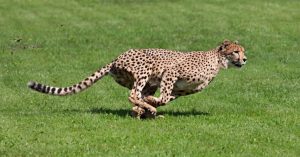
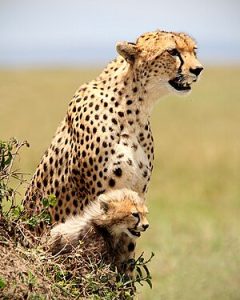
Leopards typically prey on smaller animals such as antelope, gazelles, impalas, and sometimes smaller animals. Leopards can successfully hunt 50-70% of the time. However, if the speed does not achieve perfect balance, they will quickly become tired and may not succeed in the hunt.
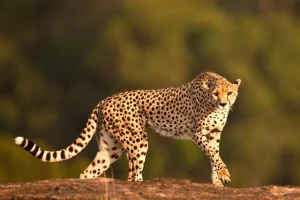
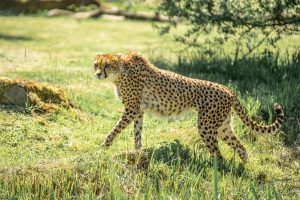
The speed of leopards Leopards are one of the fastest animals in the world, with a maximum speed of about 112 km/h over short distances and an average speed of about 70-75 km/h over about 1 km. Leopard speed can be compared to that of a car on a highway. Leopards use their speed to chase and kill prey, especially fast-running animals like antelope, gazelle, and wild animals.
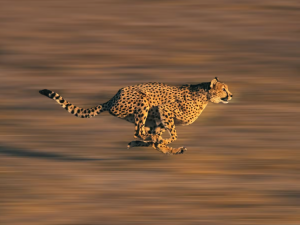

How do cheetahs hunt? Leopards are professional hunters and often hunt alone. Typically, they hunt at night or early in the morning. Leopards usually approach prey very slowly and carefully, looking for a good position to attack from a distance. They then quickly move into striking distance, reaching maximum speed in 3-4 seconds and attacking their prey by jumping on them and crushing their neck bones.
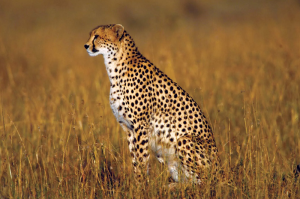

Leopards often hunt smaller prey such as antelope, gazelles, impalas, and sometimes smaller animals. Leopards can successfully hunt 50-70% of the time. However, if the speed does not achieve perfect balance, they will quickly become tired and may not succeed in the hunt.
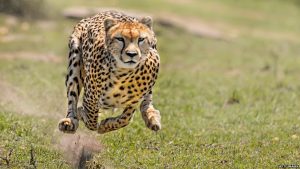

Conservation of the leopard Leopards are at risk of extinction and are listed as “Endangered” on the IUCN Red List. The main reasons for the decline of leopards include habitat loss due to agricultural expansion and livestock farming, illegal hunting to capture meat and leopard skins, as well as competition with other species in the area.

To conserve leopards, organizations and governments have implemented various activities, including establishing wildlife conservation areas, closely monitoring and controlling illegal hunting activities, educating the public about the importance of conserving wildlife. In addition, there are also many efforts to research and implement leopard breeding programs to increase the number of leopard individuals in the wild.



